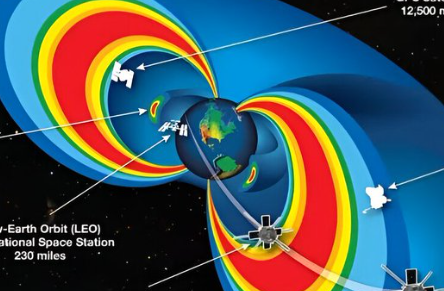Researchers have identified a previously unknown type of electromagnetic wave, which they have named the “specularly reflected whistler.” This groundbreaking discovery could reshape our understanding of how energy from Earth’s atmosphere interacts with space, carrying crucial implications for satellite technology and space exploration.
Scientists discover phenomenon impacting Earth’s radiation belts: https://t.co/n5Lc8onugd
— Ken Gusler (@kgusler) August 17, 2024
Professor Emeritus Vikas Sonwalkar and Assistant Professor Amani Reddy made the discovery, which challenges previous assumptions about how energy from lightning strikes behaves after entering Earth’s ionosphere. Until now, scientists believed that lightning energy entering the ionosphere at low latitudes remained trapped, unable to affect the radiation belts surrounding Earth. However, Sonwalkar and Reddy’s research, recently published in Science Advances, reveals that this energy can, in fact, reach the magnetosphere, doubling the amount of energy that scientists previously thought reached this region.
The radiation belts, which are composed of charged particles held in place by Earth’s magnetic field, are critical for protecting satellites, spacecraft, and communication systems from harmful cosmic radiation. By identifying this new type of wave, the specularly reflected whistler, the researchers have shown that more energy from lightning strikes may be contributing to the dynamics of the radiation belts than previously understood.
Whistler waves, which are known for their distinctive whistling sound when played through a speaker, are a type of electromagnetic wave that interacts with Earth’s magnetosphere. Scientists were already aware of magnetospherically reflected whistlers, which enter the magnetosphere from higher latitudes and reflect within it. However, Sonwalkar and Reddy’s discovery shows that specularly reflected whistlers, which originate from lightning strikes in low-latitude regions, also reach the magnetosphere, potentially transporting a greater portion of energy.
This new understanding has far-reaching implications for space technology and safety. The highly energetic particles in the radiation belts can damage satellites, spacecraft, and pose health risks to astronauts, making it crucial to understand how these belts are influenced by terrestrial phenomena like lightning. “The energetic particles of the radiation belts can damage electronics and cause cancer,” Sonwalkar explained, highlighting the importance of this research.
The discovery was made possible using data from NASA’s Van Allen Probes, which operated from 2012 to 2019, and the World Wide Lightning Detection Network. The researchers were able to create a wave propagation model that demonstrated how specularly reflected whistlers could be doubling the amount of lightning energy reaching the magnetosphere, suggesting that the processes occurring in Earth’s upper atmosphere and magnetosphere are more complex than previously thought.
A satellite in a geosynchronous orbit (GEO) is at an altitude of about 6.6 RE (Earth radii), which places it outside the radiation belts.
The problem with GEO satellites for missile launch detention is that they have excellent coverage of the equatorial areas but are not as good… pic.twitter.com/hCUI9MJ1Ia— Filippo Neri (@FilippoNer97498) August 16, 2024
This new wave type adds a significant layer to our understanding of radiation belt physics, opening up new avenues for further research into the influence of terrestrial lightning on Earth’s magnetosphere. The findings could lead to advancements in space weather forecasting, satellite design, and strategies to protect astronauts and equipment from the dangers posed by the radiation belts.
Supported by grants from the National Science Foundation and NASA EPSCoR, Sonwalkar and Reddy’s work underscores the ongoing need to explore the intricate interactions between Earth’s atmosphere, magnetosphere, and space weather. Their discovery ensures that humanity is better prepared for the challenges of space exploration, providing valuable insights into the complex dynamics of Earth’s magnetosphere.
Key Points:
i. Researchers have discovered a new type of electromagnetic wave, the “specularly reflected whistler,” which carries energy from lightning strikes in tropical and subtropical regions into Earth’s magnetosphere.
ii. This wave challenges previous assumptions that lightning energy entering the ionosphere at low latitudes was trapped, revealing instead that this energy can reach the radiation belts, doubling the amount previously believed.
iii. The discovery has significant implications for space technology, as the increased energy in the magnetosphere can impact satellites, spacecraft, and astronaut safety by exacerbating radiation belt conditions.
iv. The research was supported by data from NASA’s Van Allen Probes and offers new avenues for understanding the dynamics of Earth’s protective space environment and improving space weather forecasting.
v. This groundbreaking finding opens the door for further study of how terrestrial lightning influences space physics and the development of new strategies to protect modern space operations.
Kirk Volo – Reprinted with permission of Whatfinger News

